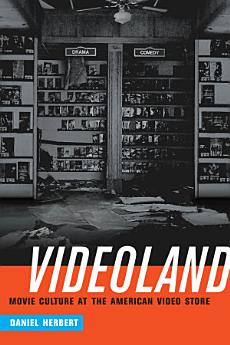Videoland: Movie Culture at the American Video Store
Jan 2014 · Univ of California Press
Ebook
332
Pages
family_home
Eligible
info
reportRatings and reviews aren’t verified Learn More
About this ebook
Videoland offers a comprehensive view of the "tangible phase" of consumer video, when Americans largely accessed movies as material commodities at video rental stores. Video stores served as a vital locus of movie culture from the early 1980s until the early 2000s, changing the way Americans socialized around movies and collectively made movies meaningful. When films became tangible as magnetic tapes and plastic discs, movie culture flowed out from the theater and the living room, entered the public retail space, and became conflated with shopping and salesmanship. In this process, video stores served as a crucial embodiment of movie culture’s historical move toward increased flexibility, adaptability, and customization.
In addition to charting the historical rise and fall of the rental industry, Herbert explores the architectural design of video stores, the social dynamics of retail encounters, the video distribution industry, the proliferation of video recommendation guides, and the often surprising persistence of the video store as an adaptable social space of consumer culture. Drawing on ethnographic fieldwork, cultural geography, and archival research, Videoland provides a wide-ranging exploration of the pivotal role video stores played in the history of motion pictures, and is a must-read for students and scholars of media history.
In addition to charting the historical rise and fall of the rental industry, Herbert explores the architectural design of video stores, the social dynamics of retail encounters, the video distribution industry, the proliferation of video recommendation guides, and the often surprising persistence of the video store as an adaptable social space of consumer culture. Drawing on ethnographic fieldwork, cultural geography, and archival research, Videoland provides a wide-ranging exploration of the pivotal role video stores played in the history of motion pictures, and is a must-read for students and scholars of media history.
About the author
Daniel Herbert is Assistant Professor of Screen Arts and Cultures at the University of Michigan.
Rate this ebook
Tell us what you think.
Reading information
Smartphones and tablets
Install the Google Play Books app for Android and iPad/iPhone. It syncs automatically with your account and allows you to read online or offline wherever you are.
Laptops and computers
You can listen to audiobooks purchased on Google Play using your computer's web browser.
eReaders and other devices
To read on e-ink devices like Kobo eReaders, you'll need to download a file and transfer it to your device. Follow the detailed Help Center instructions to transfer the files to supported eReaders.





